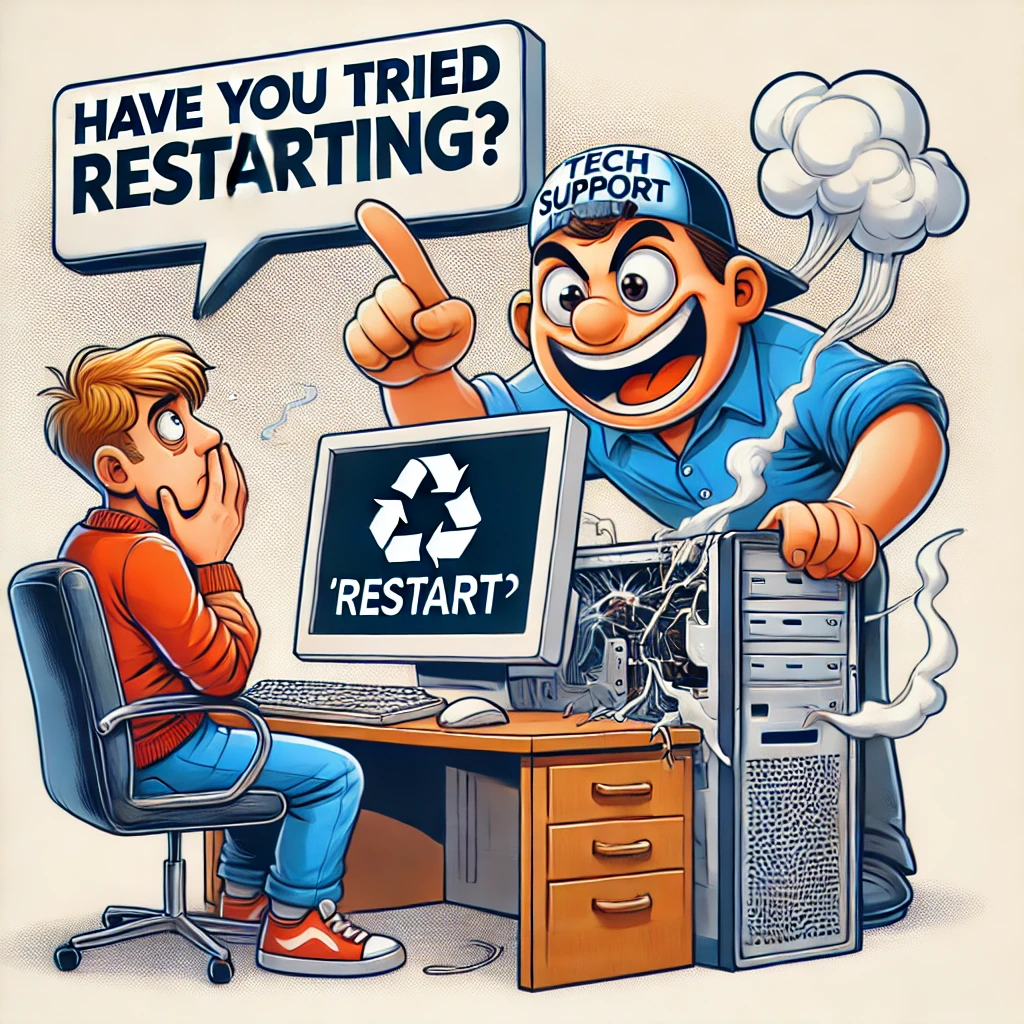


Author:Jonathan Spurling
Posted Date: March 05, 2024

Ah, the classic IT advice: "Have you tried turning it off and on again?" If you’ve ever called tech support, you’ve probably heard this phrase before. It’s so common that it’s become a meme, a punchline, and for some, a source of frustration. But here’s the thing… it actually works. Let’s break down why restarting your computer (or phone, tablet, router, or even smart fridge) is the first and most effective step in troubleshooting.
Computers love to hoard things. Not like that one closet in your house you’re afraid to open, but close. When you use your computer, it stores temporary files, background processes, and data in RAM (Random Access Memory). Over time, this builds up, and your system starts feeling sluggish. A restart wipes the slate clean and lets your machine start fresh, free of digital clutter.
Sometimes, programs misbehave. They don’t close properly, they freeze, or they start acting like they’ve had one too many cups of coffee. Restarting forces every application to shut down completely, fixing many issues automatically. Think of it as sending your rowdy apps to bed so they can wake up refreshed.
Your computer gets updates in the background, but some don’t fully apply until a restart happens. If your system is acting weird after an update, a reboot often lets those changes finalize properly. It's like when you install new furniture—sometimes, you need to rearrange the room to make it all fit.

Even hardware components can get stuck in a bad state. Your Wi-Fi card, graphics processor, or even your keyboard might stop responding. Restarting power-cycles everything, giving your hardware a chance to reset. Think of it like unplugging your router when the internet stops working. Same concept!
Let’s be honest—restarting is quick and requires zero technical knowledge. If the issue can be fixed in under a minute by pressing a button, why not try it? It saves you from diving into complex troubleshooting and saves IT support from running through unnecessary steps.
Of course, not every problem is solved with a reboot. If your issue persists after a restart, then it’s time to dig deeper. That’s when tech support (like us!) comes in with the big guns—logs, diagnostics, and advanced troubleshooting.
But we always start with a restart because it eliminates the simplest problems first. It’s not laziness—it’s efficiency!

Next time your computer starts acting up, don’t panic—just give it a restart. And if it still misbehaves? That’s when you call us, or contact us, your friendly tech support heroes, ready to save the day! Now, go on—press that restart button like a pro! 💻🔄